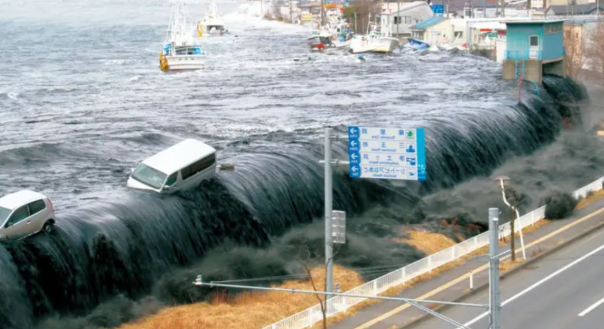Massive Earthquake Strikes Russia’s Kamchatka Peninsula: Experts Compare It to Historic 1952 Megaquake

Introduction
Kamchatka earthquake: A powerful earthquake has rocked Russia’s far-eastern Kamchatka Peninsula, sending shockwaves through the seismically active region. Authorities have described the tremor as “a remarkable event,” noting it’s the strongest quake to hit the area since the devastating 1952 magnitude 9.0 earthquake.
Seismologists, including Ross Stein, CEO of Temblor, Inc. and geophysics lecturer at Stanford University, suggest this quake may follow a pattern similar to past megaquakes in the region. With foreshocks detected as early as July 22, experts are closely monitoring the situation for potential aftershocks or further seismic activity.
In this article, we’ll explore:
Details of the Kamchatka earthquake
Comparison with the historic 1952 quake
Expert insights on seismic risks
Why this region is prone to earthquakes
Safety measures for future events
Breaking: The Kamchatka Earthquake – Key Details
The earthquake struck near the Kamchatka Peninsula, a region known for its high tectonic activity due to its location along the Pacific Ring of Fire. Preliminary reports indicate:
- Magnitude: Estimated between 6.5 to 7.0
- Depth: Approximately 100-150 km (reducing surface damage)
- Epicenter: Off the coast of Kamchatka
- Tsunami Threat: No immediate warning issued
Despite its strength, the quake’s deep focus minimized structural damage. However, residents reported strong shaking, raising concerns about future seismic events.

A Repeat of History? Comparing 2024 to the 1952 Megaquake
Ross Stein highlights an alarming similarity between this quake and the 1952 Kamchatka earthquake, which remains one of the strongest ever recorded. Key comparisons include:
1. Foreshock Activity
- The recent quake was preceded by a rare foreshock sequence on July 22.
- Similar patterns were observed before the 1952 event, suggesting a possible precursor to larger tremors.
2. Magnitude & Subduction Zone Link
- The 1952 quake reached magnitude 9.0, triggering a Pacific-wide tsunami.
- Stein notes that “75 years might be a reasonable repeat time for quakes of this size,” given the subduction rate in this megathrust zone.
3. Tectonic Implications
The Kamchatka Peninsula sits atop the Kuril-Kamchatka Trench, where the Pacific Plate subducts beneath the Okhotsk Plate. This movement builds stress over decades, leading to massive quakes when released.
Why Is Kamchatka a Seismic Hotspot?

Kamchatka’s location makes it one of the most earthquake-prone regions globally. Key reasons include:
1. Pacific Ring of Fire
- The peninsula lies along the Ring of Fire, an arc of intense seismic and volcanic activity.
- About 90% of the world’s earthquakes occur here.
2. Active Volcanoes & Fault Lines
- Home to 29 active volcanoes, including Klyuchevskaya Sopka, Eurasia’s tallest.
- Multiple fault lines increase rupture risks.
3. History of Megaquakes
- 1952 (M9.0), 1963 (M8.5), and 2006 (M8.3) quakes have struck the region.
Could This Trigger Another Big One? Expert Warnings
While the recent quake did not cause major destruction, experts warn:
Aftershocks may continue for weeks.
Stress shifts could activate nearby faults.
The region is overdue for a megaquake based on historical patterns.
Ross Stein emphasizes that “given the rate of subduction along this megathrust zone, another major quake is inevitable.”
How to Stay Safe During Earthquakes
If you live in an earthquake-prone area, follow these safety tips:
Before an Earthquake:
- Secure heavy furniture.
- Keep an emergency kit (water, food, flashlight).
- Know evacuation routes.
During an Earthquake:
- Drop, Cover, and Hold On.
- Avoid windows and heavy objects.
- If outdoors, move to open areas.
After an Earthquake:
- Check for injuries and gas leaks.
- Listen to official updates for tsunami warnings.
Is Kamchatka Prepared for the Next Big One?
The recent earthquake serves as a stark reminder of Kamchatka’s volatile geology. With experts drawing parallels to the 1952 disaster, authorities must enhance preparedness for future quakes.
As Ross Stein points out, “seismic cycles suggest we may be entering another active phase.” Monitoring and early warning systems will be crucial in mitigating risks.
For now, residents and scientists alike remain vigilant, knowing that the next major tremor could strike at any time.

FAQs About the Kamchatka Earthquake
Q: Was there a tsunami after this earthquake?
A: No, due to the quake’s depth, no tsunami threat was issued.
Q: How often do major quakes hit Kamchatka?
A: Historically, every 50-75 years, based on tectonic stress buildup.
Q: Can this quake trigger volcanic eruptions?
A: While possible, no immediate volcanic activity has been reported.
Q: Is Kamchatka at risk of another magnitude 9 quake?
A: Yes, given the region’s seismic history, another megaquake is possible.

Pingback: Aubrey Plaza Journey: From Movies & TV to Love Life and Net Worth - mineVerse360